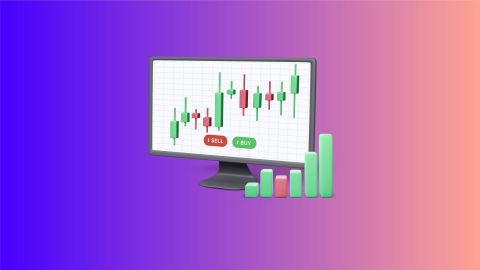If you are someone who travels a lot or does business internationally, you must have had to exchange currencies at some point. One of the most common currency pairs you will come across is the US Dollar (USD) and the Indian Rupee (INR).
Knowing exactly how the ups and downs of USD INR trading work is important for making the most of your money in the foreign exchange market. Let us take a closer look at how USD INR trading strategies work.
What is USD INR trading?
USD INR trading refers to the buying and selling of US Dollars (USD) in exchange for Indian Rupees (INR) and vice versa. This exchange happens on the foreign exchange market (forex market), a vast, decentralised network where currencies are traded electronically 24/7. Participants in this market include banks, corporations, investment firms, governments, and individual traders.
The exchange rate in USD INR trading tells you how many rupees you need to buy one dollar, and it keeps changing based on things like the economy and what's happening in the world. Traders aim to profit by buying a currency when it is cheap and selling it when it gets more expensive. So, they are looking to buy low and sell high, just like you would with a trading card.
Factors influencing exchange rates
There are multiple factors that influence the exchange rate between USD and INR. Understanding them is essential for making informed trading decisions.
- Interest rates: The interest rate differential between the US and India plays a significant role. If US rates are higher, it attracts investments from India, making USD more in demand and INR less in demand. This strengthens the USD and weakens INR.
- Inflation: Inflation in a country reduces the buying power of a currency. If India has higher inflation than the US, a dollar becomes more valuable than a rupee. This weakens INR.
- Economic growth: A strong and growing US economy makes the USD more attractive, similar to interest rates. This strengthens USD compared to INR.
- Political and economic stability: Political stability and economic policies in both countries can impact investor confidence, affecting the exchange rate.
- Supply and demand: Just like any good, the exchange rate depends on how much USD or INR is available and how much people want them. More demand for USD compared to INR pushes the exchange rate up for USD.
Trading USD INR in the derivative market
While the direct exchange of currencies happens in the spot market, most USD INR trading takes place in the derivative market. Here, traders don't physically exchange currencies but enter into contracts that speculate on the future value of the exchange rate. Popular derivative instruments for USD INR trading include:
- Forwards and futures contracts: These contracts lock in the exchange rate for a future date, allowing traders to hedge against potential fluctuations.
- Options contracts: Options contracts offer traders the right, but not the obligation, to buy or sell USD INR at a predetermined price by a specific date.
Derivative markets offer leverage, which allows traders to have more control with a smaller initial investment. However, there's a catch. If the price goes up, you make more money than you would have without leverage. But if the price goes down, you lose more money because of the borrowed amount.
Also read: Commodity trading
Trading strategies for USD INR
There are various trading strategies employed by participants in the USD INR trading market. Some popular approaches include:
- Carry trade: This involves borrowing low-interest-rate currency (like USD) and investing it in a high-interest-rate currency (like INR) to profit from the interest rate differential.
- Technical analysis: This strategy uses chart patterns and technical indicators that use historical price movements to locate the right time to enter and exit the market for trades.
- Fundamental analysis: This analysis focuses on analysing economic data, interest rates, and political events to predict future exchange rate movements.
- Hedging: Businesses and individuals can use USD INR derivatives to hedge against potential losses arising from fluctuations in the exchange rate.
The right strategy depends on individual risk tolerance, investment goals, and market conditions. It is important to research and develop a well-defined trading plan before entering the market.
Also read: Best intraday trading strategies
Benefits and potential risks of USD INR trading
USD INR trading offers a unique set of benefits and potential risks for participants.
Benefits
- Profit potential: By capitalising on favourable exchange rate movements, traders can generate profits from buying low and selling high.
- Hedging opportunities: Businesses and individuals exposed to foreign currency fluctuations can use USD INR derivatives to hedge against potential losses.
- Diversification: Including USD INR trading in your portfolio can add diversification and potentially improve risk-adjusted returns.
- Accessibility: The forex market offers 24/7 accessibility, allowing traders to participate at their convenience.
Potential risks
- Market volatility: The forex market is inherently volatile, and sudden fluctuations can lead to significant losses.
- Leverage risk: While magnifying potential profits, leverage can also amplify losses.
- Transaction costs: Forex trading involves bid-ask spreads and commissions, which can eat into profits.
- Counterparty risk: There's a risk of default by the other party in a currency transaction.
Additional tips for USD INR trading
Here are some USD INR trading tips to keep in mind:
- Stay informed: Keep yourself updated on economic news, central bank policies, and global events that can impact the exchange rate.
- Start small: Begin with smaller trading positions to understand the market dynamics and manage risk effectively.
- Practice risk management: Employ stop-loss orders to limit potential losses and manage leverage cautiously.
- Discipline is key: Develop trading discipline and stick to your trading plan to avoid emotional decisions.
- Seek professional guidance: Consider consulting with a financial advisor for personalised guidance tailored to your financial goals and risk tolerance.
Conclusion
USD INR trading offers profit opportunities, but it also carries inherent risks. By understanding the market dynamics and influencing factors and employing sound trading strategies, individuals can navigate the complexities of USD INR trading and make informed decisions. Thorough research, discipline, and risk management are key to success in this constantly changing market.




